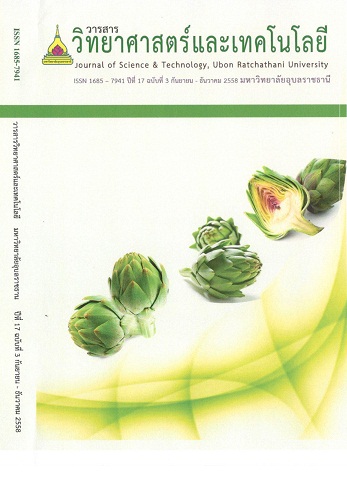Learning Preferences of Nursing and Midwifery Students
Main Article Content
บทคัดย่อ
Learning preferences are the ways that people want to interchange information and include Visual, Auditory, Read/Write, and Kinesthetic (VARK) approaches. They are important in the development of nursing and midwifery students, helping translate theory into practice, and making what is learned in the classroom a reality. The objectives of the study were 1) to identify the differences of learning preferences between nursing and midwifery students, 2) to compare the first and the second-year of students’ learning preferences, and 3) to determine the association between Grade Point Average (GPA) and students’ learning preferences. A descriptive cross-sectional study was carried out between May and June 2014, and VARK questionnaire version 7.8. was administered. A total of 241 students participated in this study selected by stratified random sampling. Data analysis used Chi square test and One-Way ANOVA (α=0.05). The study showed that 61.7% of the nursing and 67.8% of the midwifery students in first year and 70.8% of the nursing and 63.3% of the midwifery students in second year used multimodal learning preferences. There was no significant differences in learning preferences between first and second year students and between nursing and midwifery students (P>0.05). Furthermore, there was no association between GPA and learning preferences (P>0.05). Based on the study, it was concluded that nursing and midwifery students had a variety of learning preferences but the majority used multimodal.
รูปแบบการเรียนรู้เป็นแนวทางของบุคคลที่ต้องการจะพัฒนาข้อมูล ซึ่งประกอบด้วย การสังเกต การเขียน และการลงมือทำ รูปแบบการเรียนรู้ดังกล่าวเป็นสิ่งสำคัญที่จะช่วยส่งเสริมสนับสนุนพัฒนาการของนักศึกษาหลักสูตรการพยาบาลและการผดุงครรภ์ รวมทั้งแปลความหมายจากทฤษฎีสู่การปฏิบัติ ซึ่งจะนำไปสู่การเรียนรู้ที่เหมือนสภาพจริงในห้องเรียน วัตถุประสงค์ของการศึกษาประกอบด้วย 1) ความแตกต่างของรูปแบบการเรียนรู้ระหว่างนักศึกษา 2 หลักสูตร 2) เปรียบเทียบคะแนนเฉลี่ยของรูปแบบการเรียนรู้ระหว่างนักศึกษาชั้นปีที่ 1 และ ปีที่ 2 และ 3) หาความสัมพันธ์ระหว่างผลการเรียนสะสมของนักศึกษาและรูปแบบการเรียนรู้ การวิจัยครั้งนี้ใช้แบบสอบถามวาร์ค (VARK Version 7.8) โดยนักศึกษามีทั้งหมด 241 คน แบ่งเป็นนักศึกษาหลักสูตรพยาบาลศาสตร์ 125 คน นักศึกษาหลักสูตรผดุงครรภ์ 116 คน สุ่มกลุ่มตัวอย่างแบบแบ่งชั้น และวิเคราะห์ข้อมูลโดยใช้ ไคสแควร์ และ One way annova ผลการศึกษาพบว่า ร้อยละ 61.7 และร้อยละ 67.8 ของนักศึกษาหลักสูตรการพยาบาลและการผดุงครรภ์ เป็นนักศึกษาชั้นปีที่ 1 และร้อยละ 70.8 และ 63.3 ของนักศึกษาชั้นปีที่ 2 ใช้รูปแบบการเรียนรู้หลายลักษณะ รูปแบบการเรียนรู้ระหว่างนักศึกษาหลักสูตรการพยาบาลและการผดุงครรภ์ชั้นปีที่ 1 และชั้นปีที่ 2 ไม่แตกต่างกัน (p>0.05) ค่าเฉลี่ยของผลการเรียนสะสมของนักศึกษาหลักสูตรการพยาบาลและการผดุงครรภ์ คือ 3.32 (SD=0.302) ซึ่งพบว่า ไม่มีความสัมพันธ์ระหว่างผลการเรียนสะสมและรูปแบบการเรียนรู้ (p>0.05) จากผลการศึกษาสะท้อนให้เห็นว่านักศึกษาหลักสูตรการพยาบาลและการผดุงครรภ์ มีรูปแบบการเรียนรู้ที่หลากหลาย ดังนั้น วิธีการส่งเสริมการเรียนรู้ให้ผู้เรียน ควรวางแผนให้ครอบคลุมลักษณะการเรียนรู้ทุกรูปแบบ
Article Details
บทความที่ได้รับการตีพิมพ์เป็นลิขสิทธิ์ของ วารสารวิทยาศาสตร์และเทคโนโลยี มหาวิทยาลัยอุบลราชธานี
ข้อความที่ปรากฏในบทความแต่ละเรื่องในวารสารวิชาการเล่มนี้เป็นความคิดเห็นส่วนตัวของผู้เขียนแต่ละท่านไม่เกี่ยวข้องกับมหาวิทยาลัยอุบลราชธานี และคณาจารย์ท่านอื่นๆในมหาวิทยาลัยฯ แต่อย่างใด ความรับผิดชอบองค์ประกอบทั้งหมดของบทความแต่ละเรื่องเป็นของผู้เขียนแต่ละท่าน หากมีความผิดพลาดใดๆ ผู้เขียนแต่ละท่านจะรับผิดชอบบทความของตนเองแต่ผู้เดียว


